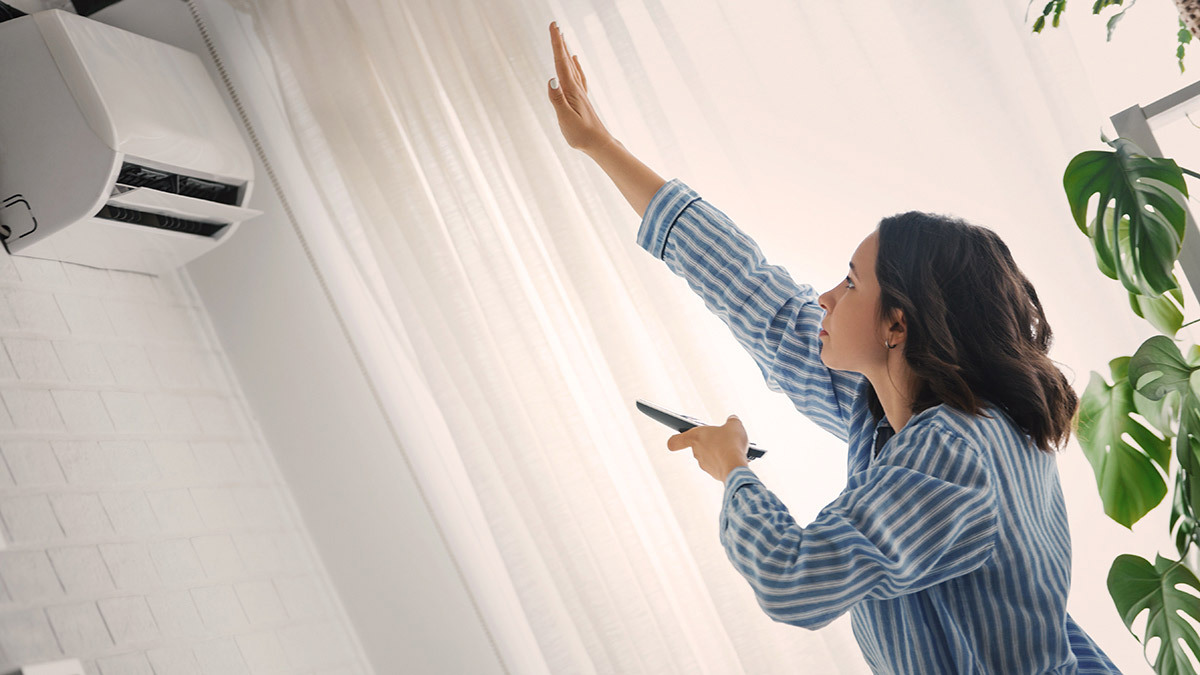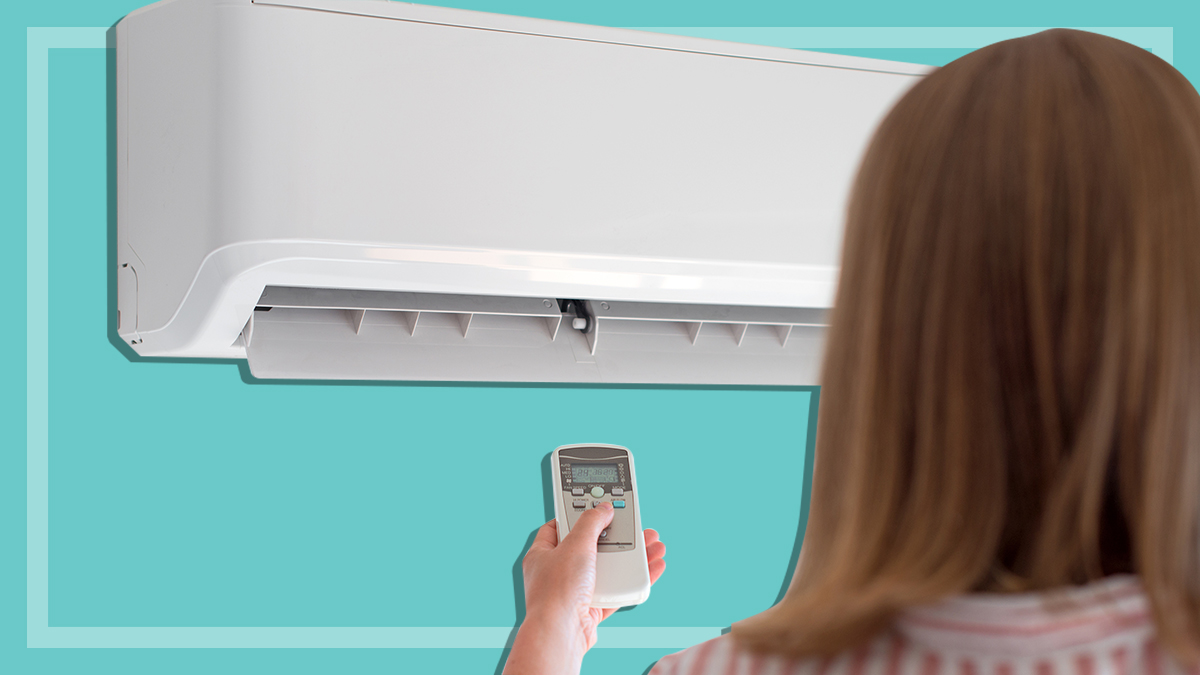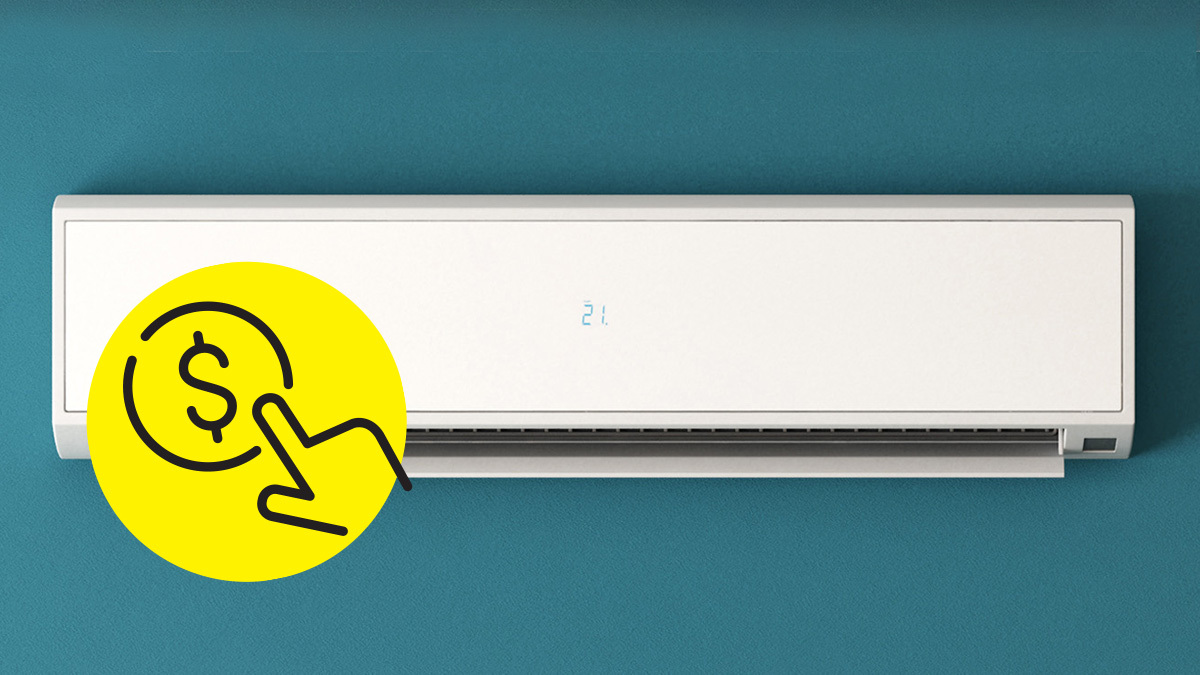Get our independent lab tests, expert reviews and honest advice.
Air conditioner energy usage and running costs

Need to know
- Portable air conditioners can cost twice as much to run as a split-system air conditioner of the same size
- Split-system air conditioners are not only more efficient, but more effective at cooling and heating
- Portable air conditioners are still a good option in cases where a split-system air conditioner isn't possible
On this page:
- What's a portable air conditioner?
- What's a split-system air conditioner?
- Running cost comparison – portable air conditioners vs split-system
- So, which type of air conditioner do you choose?
If you’re looking for an air conditioner to beat the summer heat or winter chill, but you’re worried about the running costs, you might be thinking that a portable air conditioner will be a cheaper option. Well, a portable unit may be much cheaper to buy – no installation costs! – but for cheaper running costs and better performance, a split-system air conditioner of the same capacity is actually a much better bet.
Portable units definitely have some advantages, since installation is so much easier: just plug it in, fit the duct to a window, and turn it on. This is a great option if you’re renting, or just need instant relief. But they simply can’t operate as efficiently as a split-system air conditioner, as we explain below.
We’ll break down the costs for each type – from buying them and installation through to running costs – to help you make the best choice for your home.
What’s a portable air conditioner?
Portable air conditioners are all-in-one units, usually on caster wheels for mobility, and usually with a large-diameter (about 150mm) flexible duct to vent air to the outside, usually through a window. An adjustable window adaptor, often included with the unit, lets you seal the outdoor end into most windows with minimal air leakage. Many models are cooling-only, but some are reverse-cycle for heating as well. They’re best suited to cooling or heating a single room.
They work basically the same way as built-in air conditioning: sucking in warm and humid air, cooling and dehumidifying it, then blowing it back into the room. Single-duct models, with a duct connected to a window to vent heat from the room, can be very effective at cooling most of the room, but they draw the air from the room (in order to cool it) and vent some of it outside.
Venting the hot air outside through the duct results in a net air pressure reduction, so more warm air is drawn into the room from the rest of the house. The portable air conditioner thus faces a continual struggle to cool the room.
Portable units are also noisier indoors than most split-system air conditioners (which have the advantage of having the noisiest component, the compressor, situated outside).
So while they’re convenient and often comparatively cheaper than split-system air conditioners, single-duct portable air conditioners are usually not as effective, quiet or efficient. CHOICE members can compare portable air conditioner cooling ability alongside running costs.
What’s a split-system air conditioner?
A split-system air conditioner has two parts: an indoor unit and an outdoor unit, connected by pipes containing refrigerant gas. They’re the most common air conditioner type in Australia, and come in a wide range of capacities to suit room sizes from small single rooms up to large open-plan areas.
They cool a room by extracting heat from the indoor air and shifting that heat via the refrigerant pipes to the outdoor unit (in heating mode, this process is simply reversed). That means the indoor area can be closed up and kept air tight, so hot outside air doesn’t keep coming into the home. That’s a key reason why split-system air conditioners are much more effective at cooling and heating than a portable unit.
Running cost comparison – portable air conditioners vs split-system
The table below shows the comparative costs for portable air conditioners alongside the costs for various sizes of split-system air conditioners. The running costs are based on using the air conditioner for an entire summer season. For split-systems, this is based on their rated annual energy consumption in cooling mode, for an average climate zone. For portables, it’s based running in cooling mode four hours per day for three months. Electricity is priced at 40c/kWh.
The prices for the split-systems are for the unit only, and don’t include installation costs, so you need to factor in another $600–750 to the total cost.
Most portable air conditioners have a cooling capacity of about 2–4kW, making them roughly equivalent to a small split-system in that respect. As you can see, while a small split-system air conditioner is more expensive to buy and install, it is much more cost-effective to run.
In fact, the split-system’s actual running costs may be even lower in practice. We’ve based them on the unit’s rated energy usage in cooling mode, but split-system air conditioners these days are inverter models which adjust their output as needed, so in a well-insulated and well-sealed house, they can maintain a comfortable indoor temperature while running at very low power.
| Portable | Small split | Medium split | Large split | |
|---|---|---|---|---|
| Size | 2–5.5kW | Up to 4kW | 4–6kW | Over 6kW |
| Average power consumed in one hour | 1.2kW | 0.65kW | 1.36kW | 2.15kW |
| Range of power consumed | 0.46–2.2kW | 0.31–0.94kW | 0.53–1.85kW | 1.52–3.19kW |
| Average running cost | $173 | $82 | $164 | $264 |
| Range of running costs | $66–317 | $50–134 | $126–240 | $164–390 |
| Average price | $728 | $1438 | $2139 | $2807 |
So, which type of air conditioner do you choose?
If you’re likely to use your air conditioner a lot, then it’s worth investing in a split-system. The initial expense of buying and installing it will be offset in the long run by lower running costs, and they’re a far better option if you need to cool or heat a big space.
If installing a split-system air conditioner isn’t an option, or if you only need occasional cooling or heating in one room, or you need an option that can be moved about the house as needed, then a portable air conditioner could be the answer.





